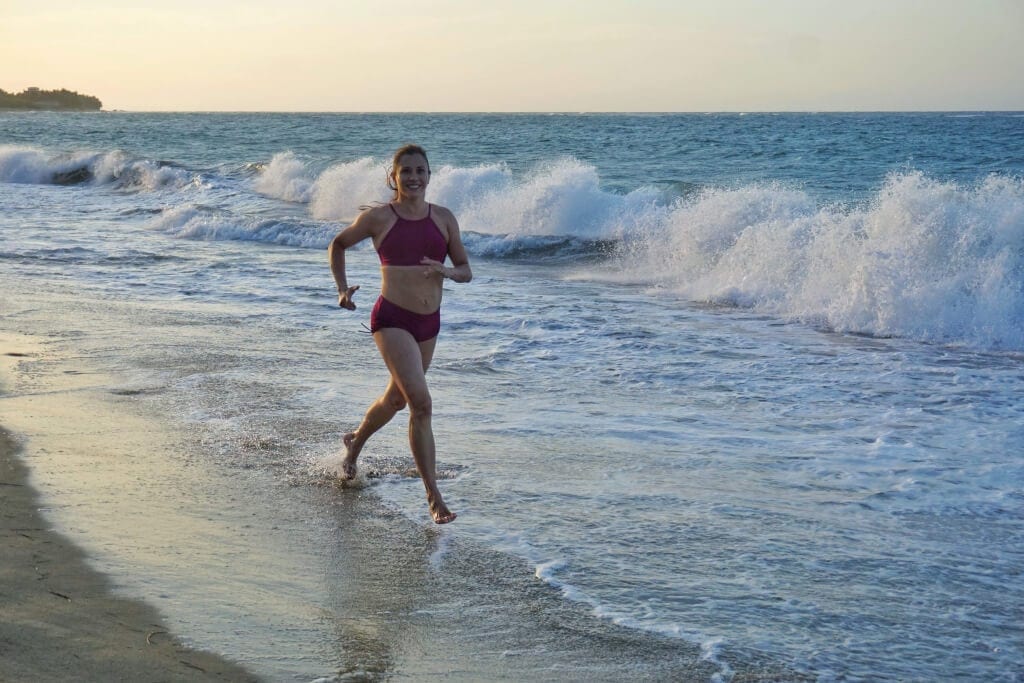Beach Running
By Emily Reilly
Do you know the beauty of the sunrise over a quiet beach with the waves crashing in the background? How about the freedom of running without the noise of cars, bikes or construction? Of course the beach is going to call runners but you may have heard that beach running is hard on your joints. So how do we make sure we are keeping our bodies and joints protected while taking full advantage of the beautiful surroundings?
First let’s talk about the benefits of beach running.
Running on the beach is one of biggest perks of living or vacationing on a coastal stretch of land. Don’t forget, beach running is not just for warm climates, running on cooler beaches has the same benefits for your body and mind.
- Running on the beach burns 60% more calories than running for the same amount of time on a road, and at running on a treadmill.
- Beach running, simply put is resistance work. It strengthens the muscles in your feet, ankles, hips, butt, and knees since the soft ground forces to use a greater range of motion demanding more work. As you sink into the sand and pull back out, you are essentially climbing with every step without gaining elevation.
- Mentally, running on the beach is just freeing if you like being on the beach.
- You can always go for a swim if you get hot, win win!
Safety concerns from beach running.
Now that we have the good, let’s talk about things you need to be cautious about when you start to run on the beach.
- Wear Sunscreen! Be sun and heat aware and include the knowledge of how your skin responds to hot sun when choose when and where you run. Water reflection increases the potential of sun damage. If you are on a warm beach make sure you are properly hydrated.
- Watch where you are running! If you are in shoes or especially if barefoot you need to be aware that the density of the beach can change with every step because of what is hidden under the sand. Above the sand we need to keep an eye out for rocks, wood, shells, and depending on the beach…trash.
- Check tides and beach geography. You do not want to get stuck due to a change in tide and have to scramble up a shear cliff. Other beach situations like thicker sand, angled beaches and hot sand can cause for injuries and discomfort if you are not attending to the needs of your body and your personal agility.
- Because running on the beach puts different strains on your body you will need to slow down, and cut back on your normal running distance. Start with a 15-25 minute run…adding 5 minutes every 5 runs. For those of us with a longer running habit this can be frustrating, but dealing with an injury is worse.
Want to go barefoot?
Watch out for shells, rocks and beach trash so you don’t get lacerations in your feet.
Just like transitioning to minimalist running shoes barefoot running on the sand takes a bit of transition time. If you are wondering if barefoot is for you, take a walk on the beach for about a mile and see how your legs feel the next day. If your calves are feeling sore you probably want to keep your shoes on for your beach runs.
So, grab a bottle of water, some running shoes you don’t mind getting sandy and wet and have a new adventure.
It takes Emily 30 minutes to run from the hotel to Cabarete along the beach. It’s 3 miles and she has a rest in between to stretch and admire the sunrise.








